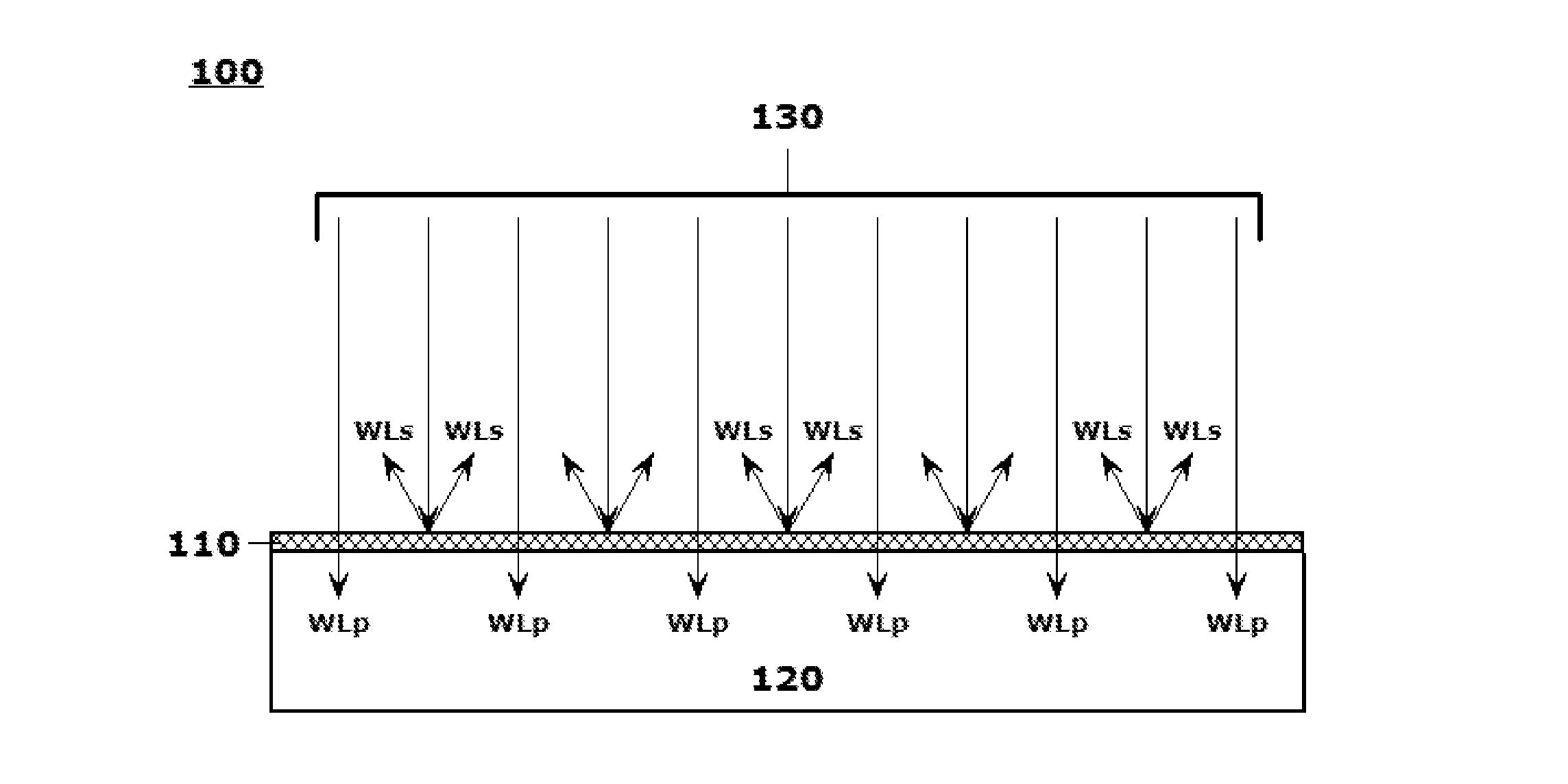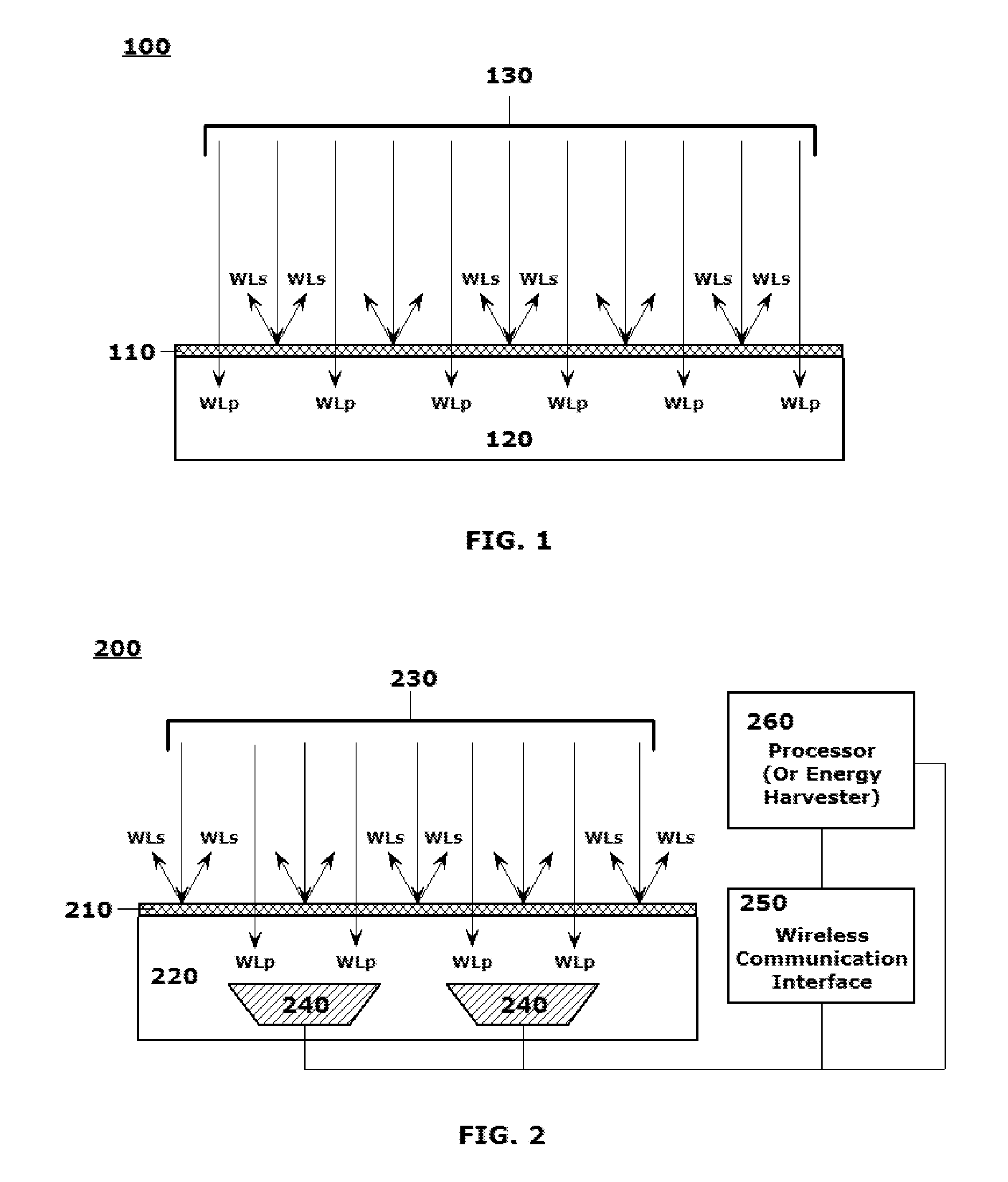Systems and methods for producing laminates, layers and coatings including elements for scattering and passing selective wavelengths of electromagnetic energy
a technology of electromagnetic energy and transmission layer, applied in the direction of optical radiation measurement, instruments, spectrophotometry/monochromators, etc., can solve the problem of not being able to see inside the vehicle from the outside, providing substantially non-modifiable adverse transmission property of ambient light on the lighted side, and increasing the potential available energy collection or energy harvesting capacity of the particular object. , to achieve the effect of highly adaptable surface finishes
- Summary
- Abstract
- Description
- Claims
- Application Information
AI Technical Summary
Benefits of technology
Problems solved by technology
Method used
Image
Examples
Embodiment Construction
[0003]This disclosure relates to systems and methods for forming electromagnetic energy transmissive layers, which are particularly formed to selectively scatter specific wavelengths of electromagnetic energy while allowing remaining wavelengths to pass therethrough, including uniquely implementing optical light scattering techniques in such energy transmissive layers, and to objects, object portions, wall plates, lenses, filters, screens and the like that are formed of, or that otherwise incorporate, such transmissive energy-scattering layers.
2. Related Art
[0004]An ability to provide or promote selective transmission of electromagnetic energy, including light in the visual or near-visual radiofrequency (RF) spectrum through layers, materials, structures or structural components provides substantial benefit in a number of real-world use cases and applications. At a simplest level for electromagnetic energy in the optical, or near-optical, spectrum, windows, skylights and the like ar...
PUM
| Property | Measurement | Unit |
|---|---|---|
| diameter | aaaaa | aaaaa |
| particle sizes | aaaaa | aaaaa |
| sizes | aaaaa | aaaaa |
Abstract
Description
Claims
Application Information
 Login to View More
Login to View More - R&D
- Intellectual Property
- Life Sciences
- Materials
- Tech Scout
- Unparalleled Data Quality
- Higher Quality Content
- 60% Fewer Hallucinations
Browse by: Latest US Patents, China's latest patents, Technical Efficacy Thesaurus, Application Domain, Technology Topic, Popular Technical Reports.
© 2025 PatSnap. All rights reserved.Legal|Privacy policy|Modern Slavery Act Transparency Statement|Sitemap|About US| Contact US: help@patsnap.com



